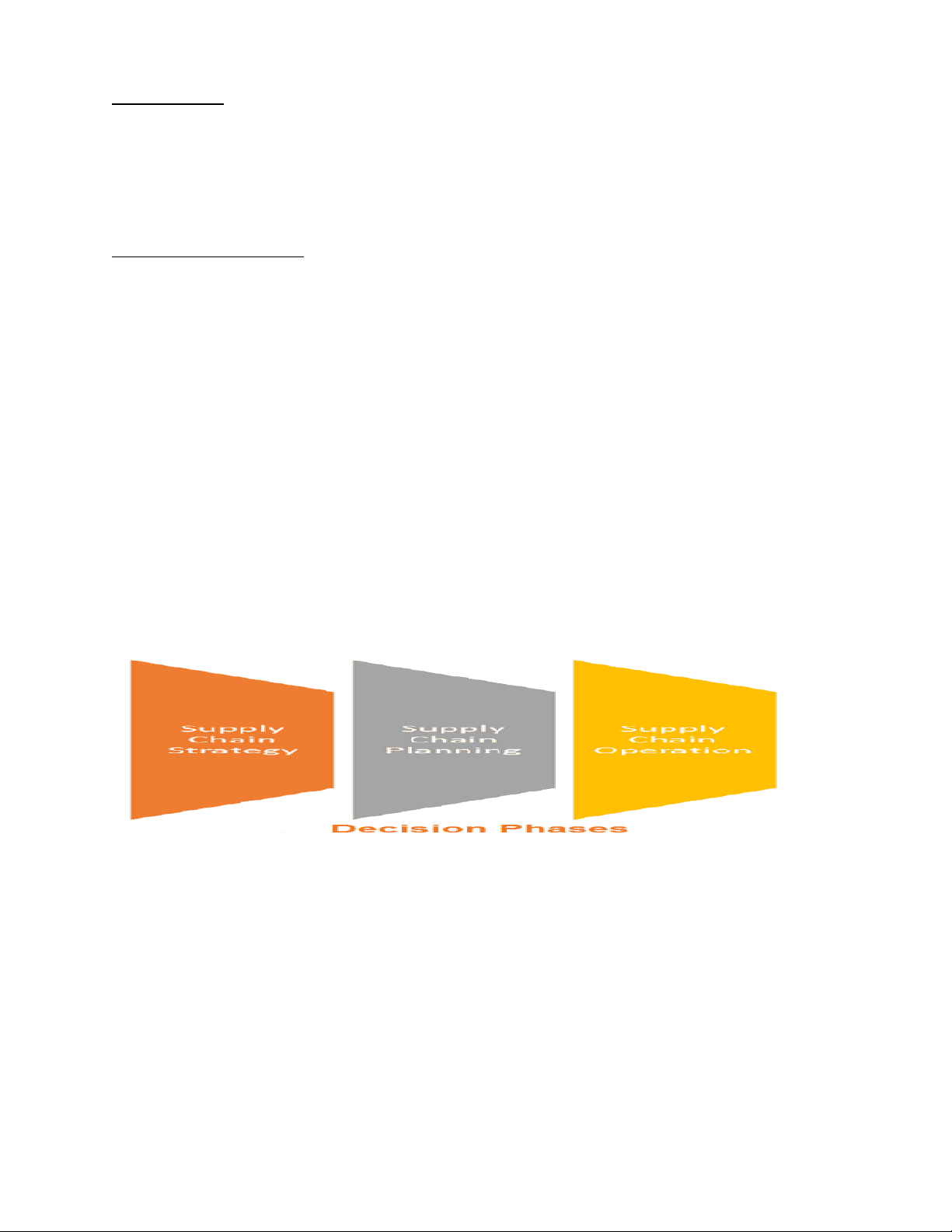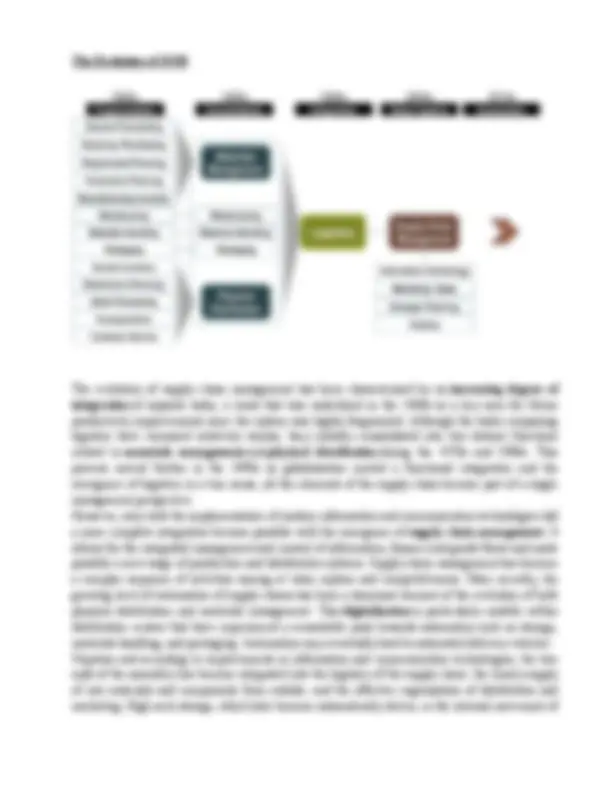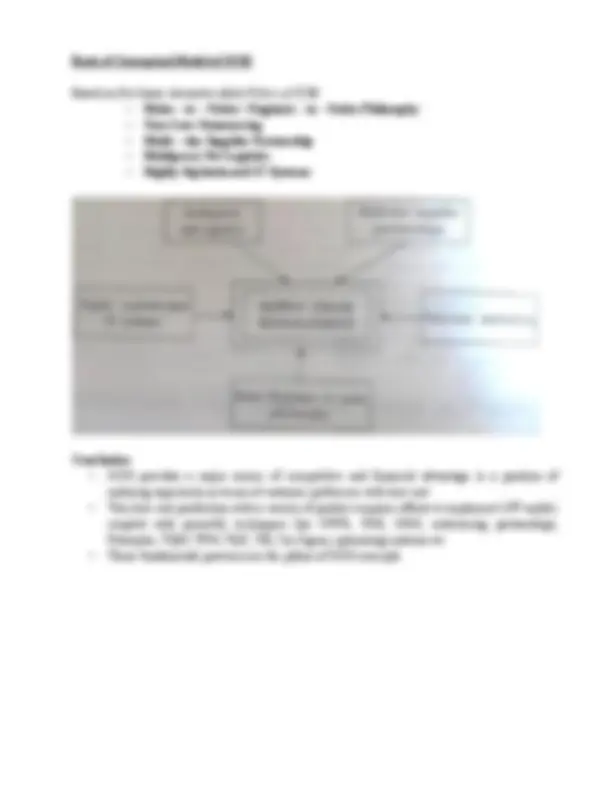





Study with the several resources on Docsity

Earn points by helping other students or get them with a premium plan


Prepare for your exams
Study with the several resources on Docsity

Earn points to download
Earn points by helping other students or get them with a premium plan
Community
Ask the community for help and clear up your study doubts
Discover the best universities in your country according to Docsity users
Free resources
Download our free guides on studying techniques, anxiety management strategies, and thesis advice from Docsity tutors
The three decision phases in supply chain management (SCM): Supply Chain Strategy, Supply Chain Planning, and Supply Chain Operations. It also explores the evolution of SCM and the conceptual model based on five pillars. Successful SCM requires strategic decisions, planning according to demand and supply, and operational decisions to minimize uncertainty and optimize performance.
What you will learn
Typology: Schemes and Mind Maps
1 / 5

This page cannot be seen from the preview
Don't miss anything!




Decision Phases in SCM The Evolution of SCM Basis of Conceptual Model of SCM Decision Phases in SCM Decision phases can be defined as the different stages involved in supply chain management for taking an action or decision related to some product or services. Successful supply chain management requires decisions on the flow of information, product, and funds that fall into three decision phases. The three main decision phases involved in the entire process of supply chain are described below − Supply Chain Strategy In this phase, decision is taken by the management mostly. The decision to be made considers the sections like long term prediction and involves price of goods that are very expensive if it goes wrong. It is very important to study the market conditions at this stage. These decisions consider the prevailing and future conditions of the market. They comprise the structural layout of supply chain. After the layout is prepared, the tasks and duties of each is laid out. All the strategic decisions are taken by the higher authority or the senior management. These decisions include deciding manufacturing the material, factory location, which should be easy for transporters to load material and to dispatch at their mentioned location, location of warehouses for storage of completed product or goods and many more. Supply Chain Planning Supply chain planning should be done according to the demand and supply view. In order to understand customers’ demands, a market research should be done. The second thing to consider is awareness and updated information about the competitors and strategies used by them to satisfy their customer demands and requirements. As we know, different markets have different demands and should be dealt with a different approach. This phase includes it all, starting from predicting the market demand to which market will be provided the finished goods to which plant is planned in this stage. All the participants or employees involved with the company should make efforts to make the entire process as flexible as they can. A supply chain design phase is considered successful if it performs well in short-term planning.
Supply Chain Operations The third and last decision phase consists of the various functional decisions that are to be made instantly within minutes, hours or days. The objective behind this decisional phase is minimizing uncertainty and performance optimization. Starting from handling the customer order to supplying the customer with that product, everything is included in this phase. For example, imagine a customer demanding an item manufactured by your company. Initially, the marketing department is responsible for taking the order and forwarding it to production department and inventory department. The production department then responds to the customer demand by sending the demanded item to the warehouse through a proper medium and the distributor sends it to the customer within a time frame. All the departments engaged in this process need to work with an aim of improving the performance and minimizing uncertainty.
packages by flat robots were early expressions of logistical engineering. Initially, logistics was an activity divided around the supplying, warehousing, production, and distribution functions, most of them being fairly independent of the other. With the new organization and management principles, firms were following a more integrated approach, thus responding to the upcoming demand for flexibility without raising costs. At the same time, many firms took advantage of new manufacturing opportunities in developing economies through outsourcing and off shoring. As production became increasingly fragmented, activities related to its management were consolidated. Spatial fragmentation became a by-product of economies of scale in distribution. Keeping in mind the recent development for last two decades, SCM evolution phases can be rearranged as ESCM and Green SCM. Due to development of ICT, 2005 onwards a drastic change in the SCM operations have been observed. This trend can be named as ESCM or Decentralized SCM, which is a synchronization of extended ERP & SCM with Scheduling of partners. Also the sustainability and environmental concern in every business activity is taking the central concern. This concern for environment and ecology is also observed in the field of SCM and thus the era of Green SCM evolved since 2010 onwards.
Basis of Conceptual Model of SCM Based on five basic elements called Pillars of SCM.